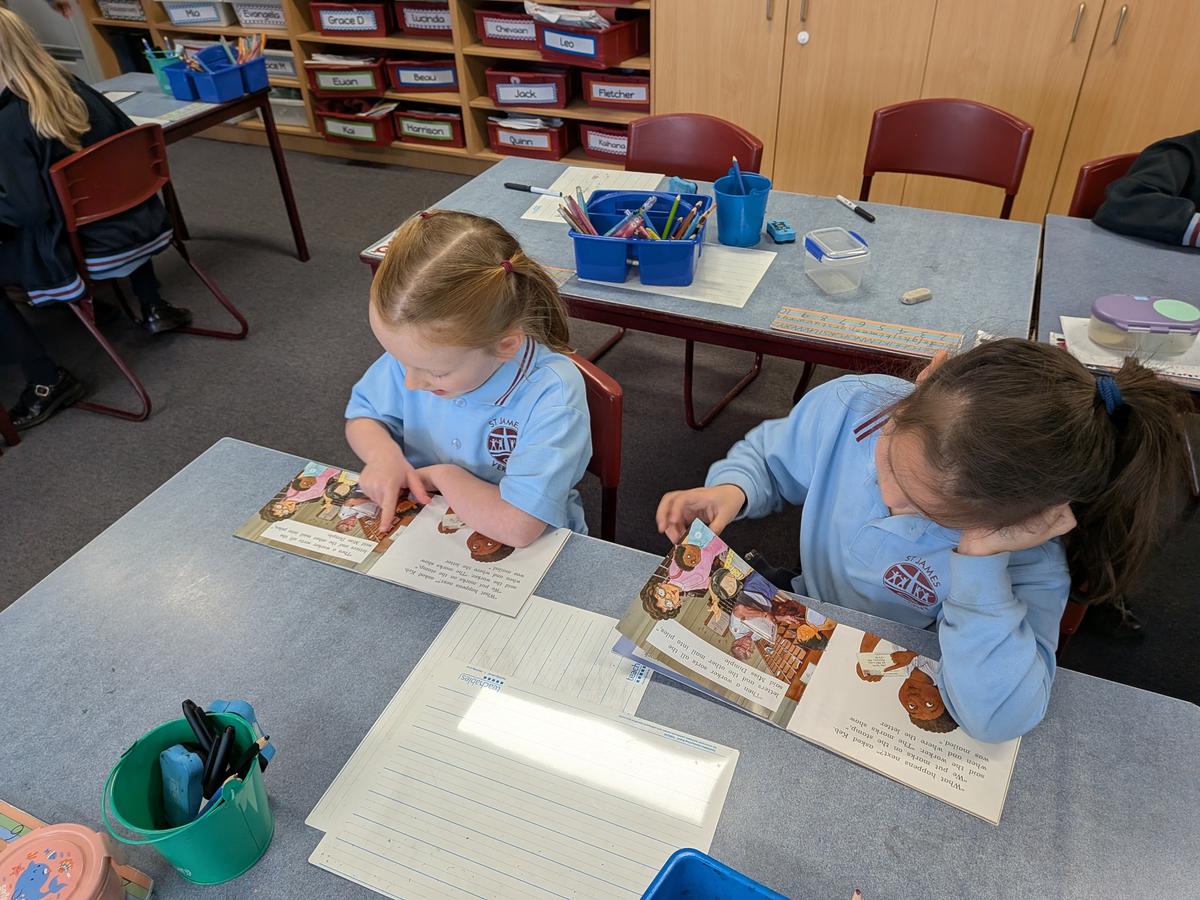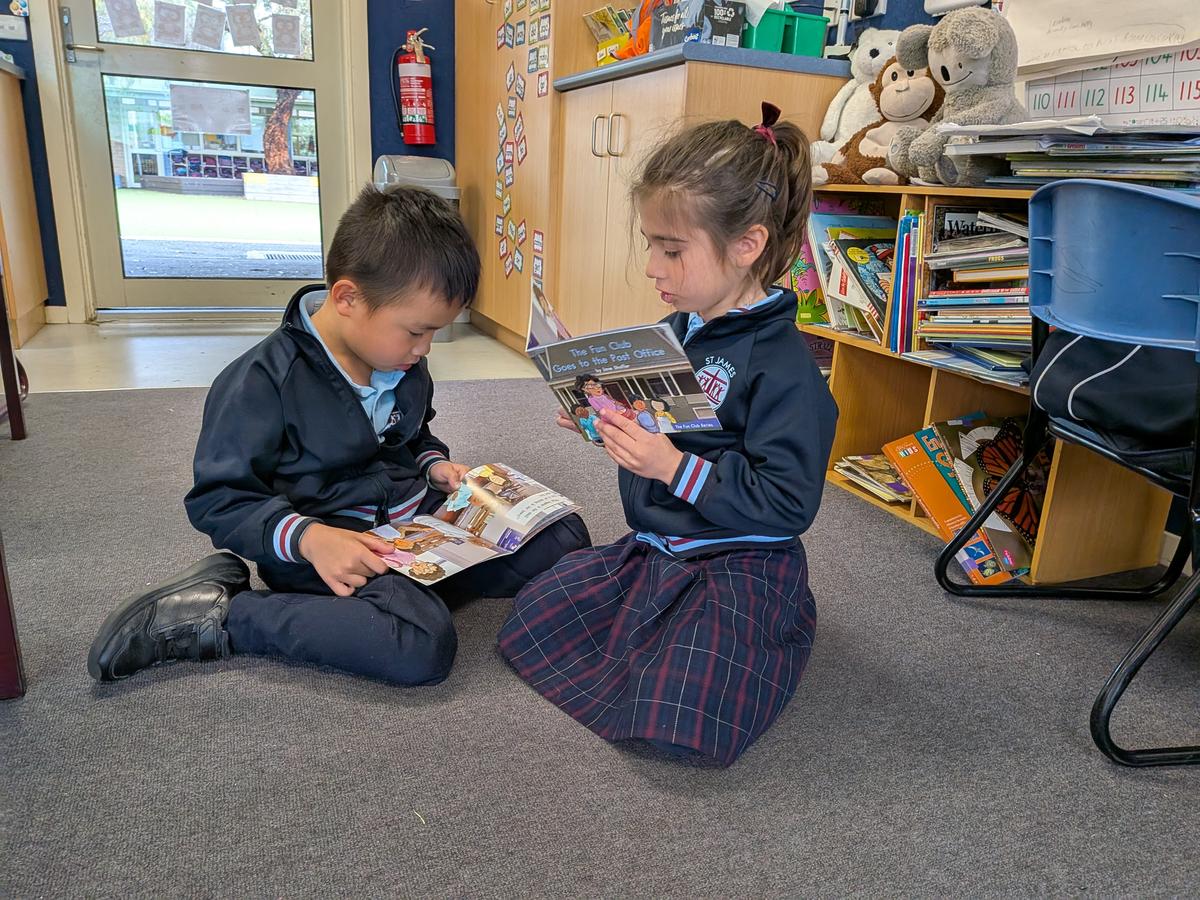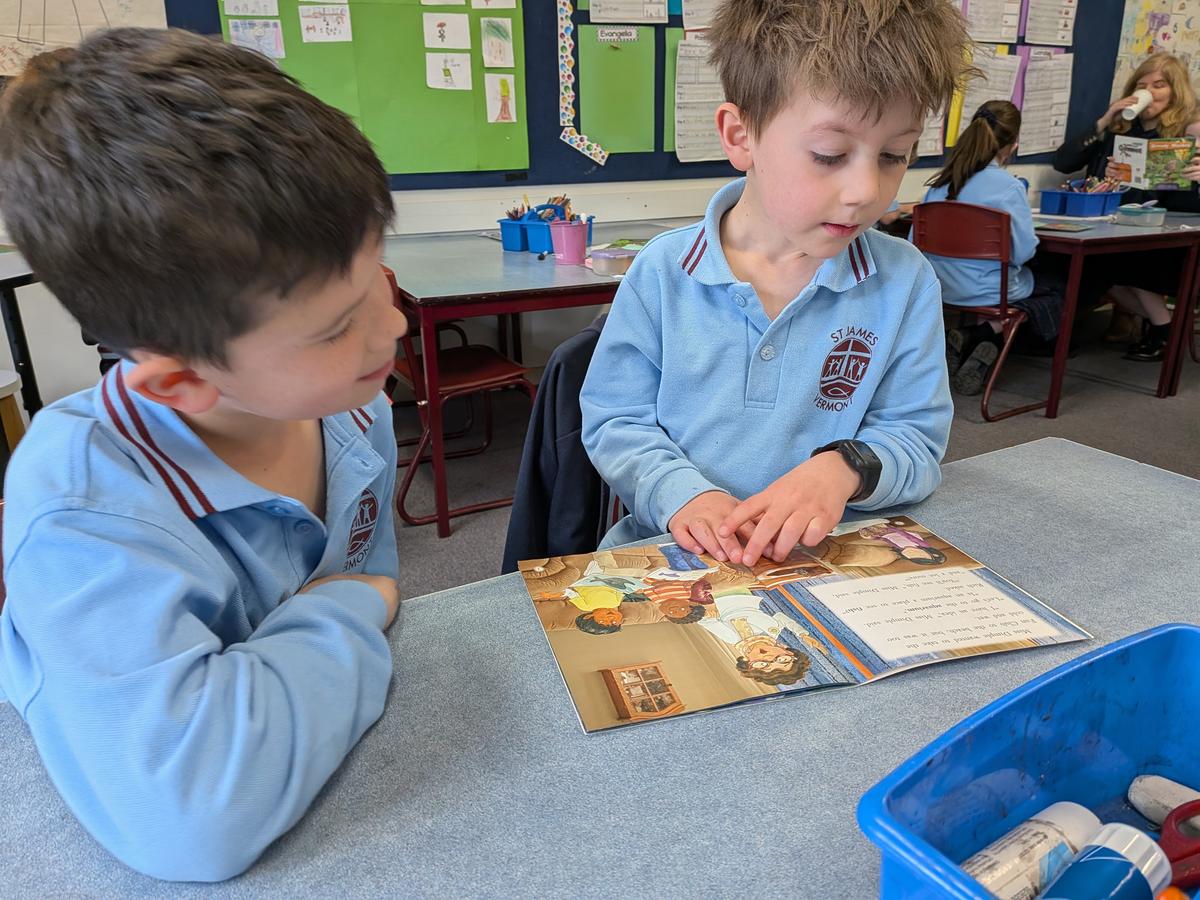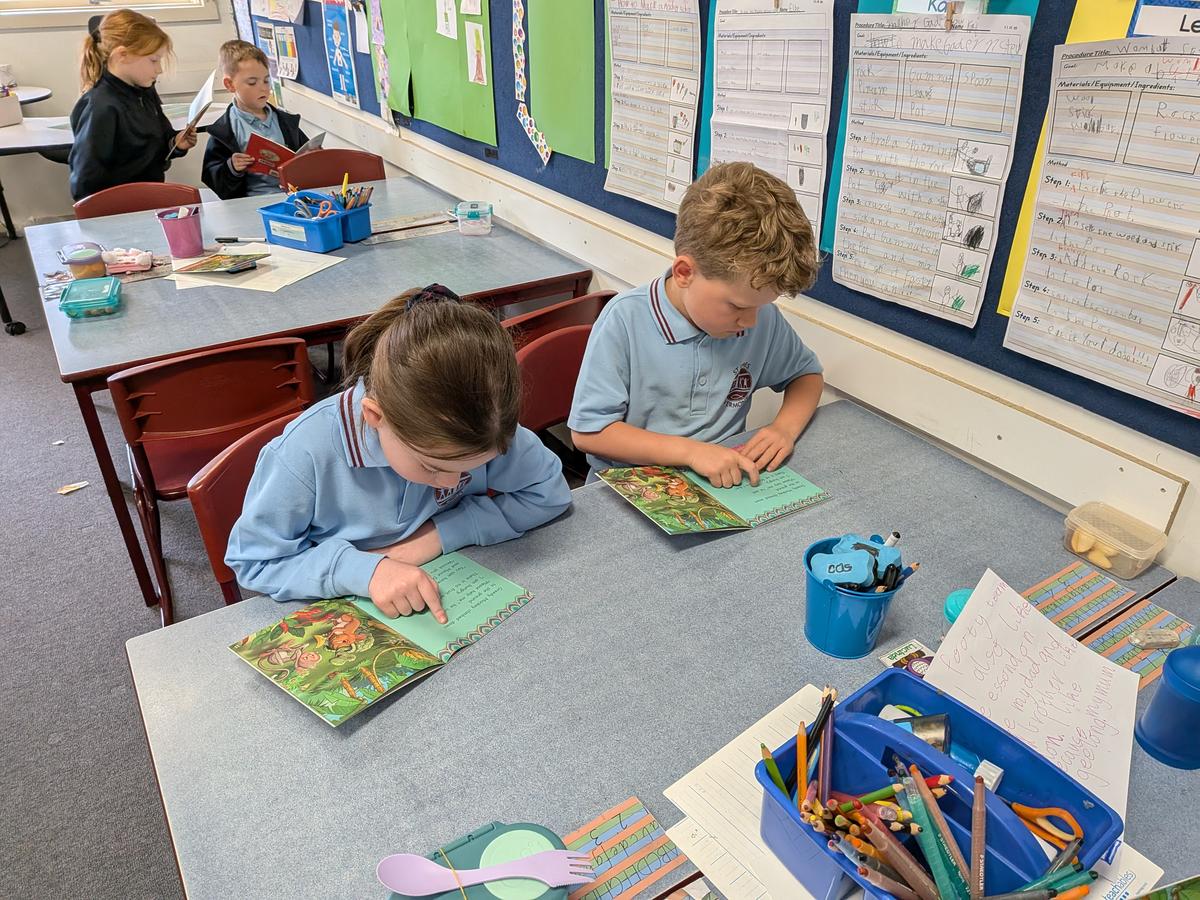Literacy and Numeracy
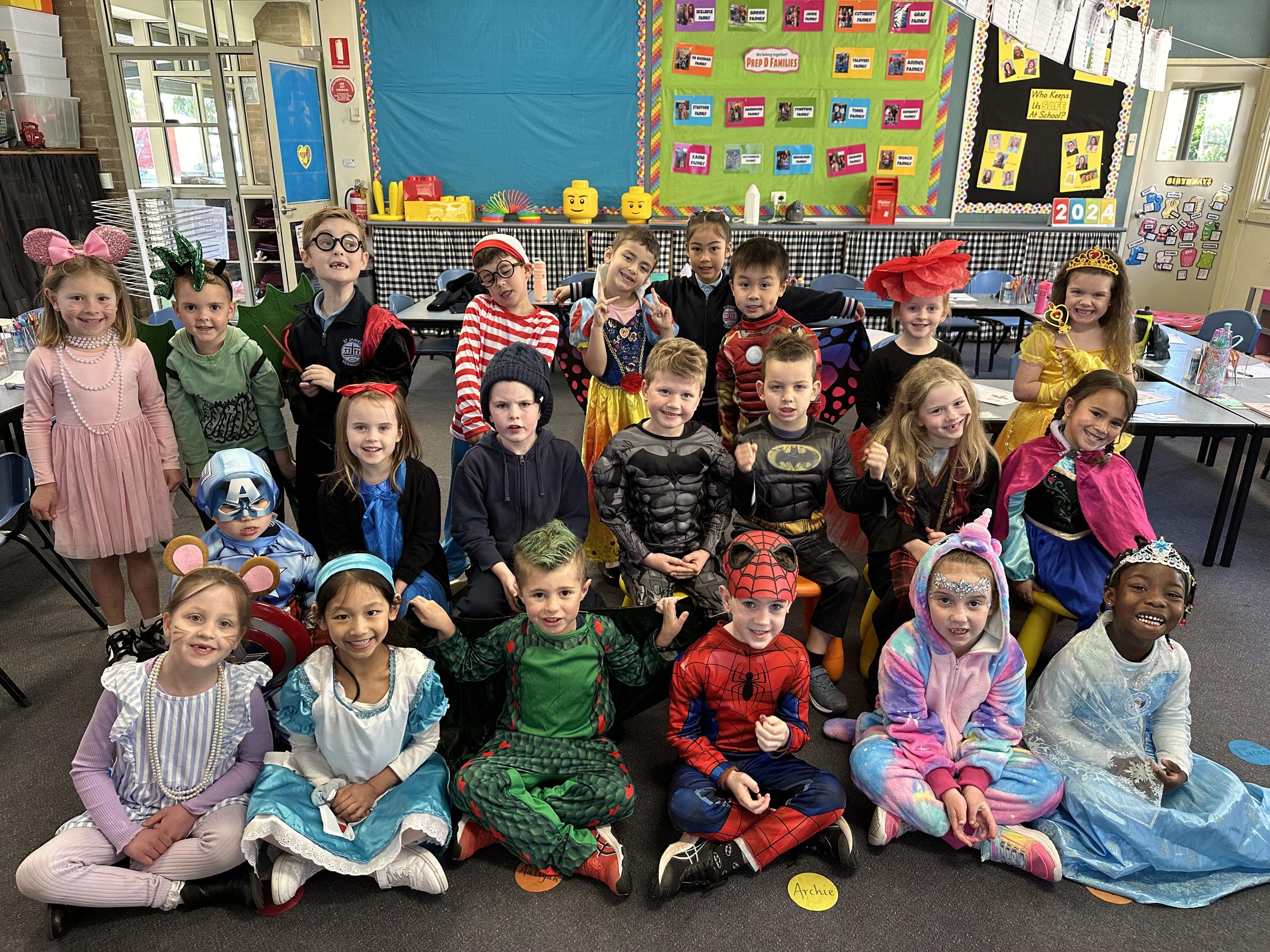
Reading Fluency
Students in all year levels are working on building their Reading fluency through reading aloud in small groups or with a partner. Years P-2 are using fluency pairs to provide opportunities to practise reading with a partner; taking turns to read and listen to each other; building their confidence in reading aloud.
Fluency is about more than just reading quickly; it’s about reading with:
- Accuracy: Reading the words correctly
- Rate: Reading at a comfortable pace, not too fast or too slow and
- Expression: Reading with the right tone, pitch, and phrasing that reflects the meaning of the text.
By focusing on these elements, students don't have to use all their energy to 'sound out' words. Their brainpower is freed up to concentrate on the meaning of what they're reading, which is the ultimate goal of reading. Fluency pairs makes this practice fun and engaging; helping every child grow as a reader.
You can help your child become a more confident and fluent reader by encouraging them to read aloud at home. Reading aloud is a powerful tool that helps children, no matter what age, practice pronunciation, build vocabulary, and develop a deeper understanding of what they're reading. Dedicate just 10-15 minutes to this activity on a regular basis—whether it's a chapter from a favorite book, a magazine article, or a recipe—and watch your child's reading skills blossom.
Reviewing our Multiplication Tables - You may like to practise during the holidays.
Learning multiplication tables is like building a strong foundation for a house. If we stop working on it, the foundation can become wobbly! A quick review of times tables during the holidays can help cement this learning into your long term memory. By spending just a few minutes a day on multiplication, your child will come back to school next term feeling confident and ready to tackle new challenges without having to start from scratch.
Holiday practice doesn't have to feel like homework. Here are a few fun and simple ideas to work into your break:
- Turn it into a game. "I Spy" multiplication can be a fun car game. For example, "I spy with my little eye... something that is a multiple of 4!"
- Flashcard fun. Keep a deck of multiplication flashcards in the car or a bag for quick quizzes while waiting for an appointment or at the park.
- Use online games and apps. There are countless free and low-cost apps that make learning times tables feel like a fun video game.

